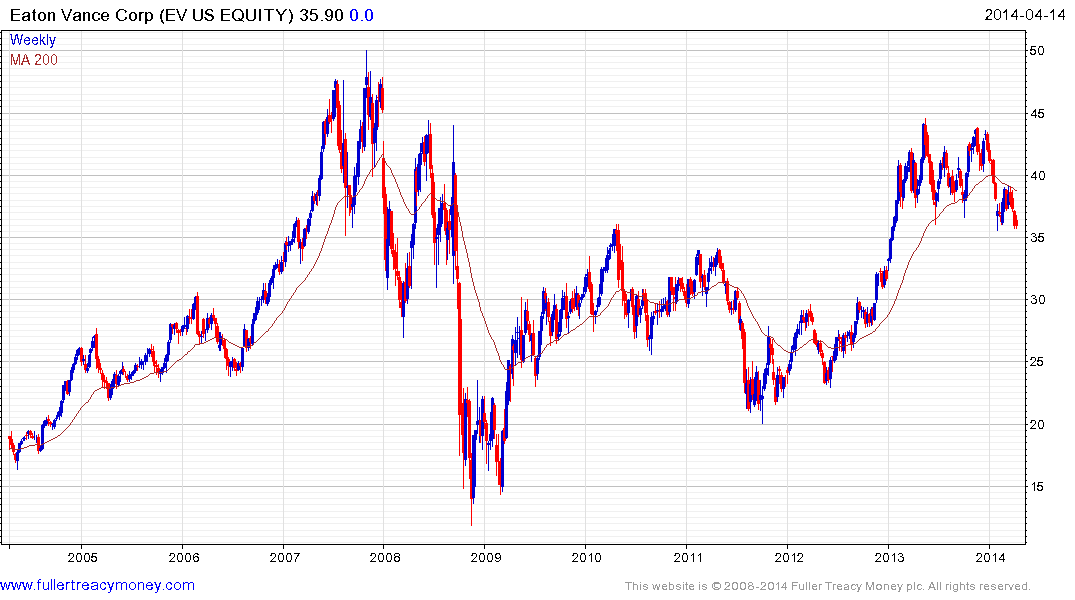Notes from the DoubleLine Lunch with Jeffrey Gundlach, Spring 2014
Thanks to a subscriber for this review of a talk by Jeffrey Gundlach from Joshua Brown for his blog The Reformed Broker. Much of the content will be familiar ground for subscribers but this comment on bond ETFs caught my attention. Here is a section:
Jeff is highly concerned with one particular bond bubble that is still ongoing. Below are all major categories of bond ETFs. The red line that began from nothing and has now zoomed to the top is bank loan ETFs, remarkably. He notes that the typical bank loans trade settles in T-plus 10 (meaning trade date plus ten more days, more than twice as long as a stock trade) and that this will mean an illiquidity catastrophe should demand for these products go the other way. The bank loan complex is not equipped to deal with rapid changes in flows, like the creation-redemption process needed for ETFs as one example. He mentions anecdotally that a hedge fund friend of his is looking to short Eaton Vance, one of the purveyors of these big bank loan investment products.
Investor awareness of the high fees they are paying for investment products has contributed to the explosive growth of the ETF sector. Rather than rely on loadings or commissions such funds primarily rely on assets under management and on low trading costs for their profitability.
The low cost of listing such funds has resulted in firms supporting large numbers of strategies in the hope that some will capture investor interest and assets under management will increase. The net result is that situations occasionally develop where the ETFs of reasonably illiquid instruments can be more liquid than the instruments themselves. ETFs remain a valuable financial innovation but it is increasingly important to do one’s due diligence in order to ascertain just what one is buying.

The success of asset management companies in developing fund platforms and creating multiple products can be witnessed from the high degree of commonality evident in the sector, particularly in the USA and UK. However Eaton Vance’s performance is diverging from the sector. Following an impressive rally for much of 2012, the share encountered resistance in the region of the 2007 peak early last year and dropped below the 200-day MA from late January. A sustained move back above $40 will be required to begin to suggest a return to demand dominance and question current scope for an additional test of underlying trading.
Back to top


